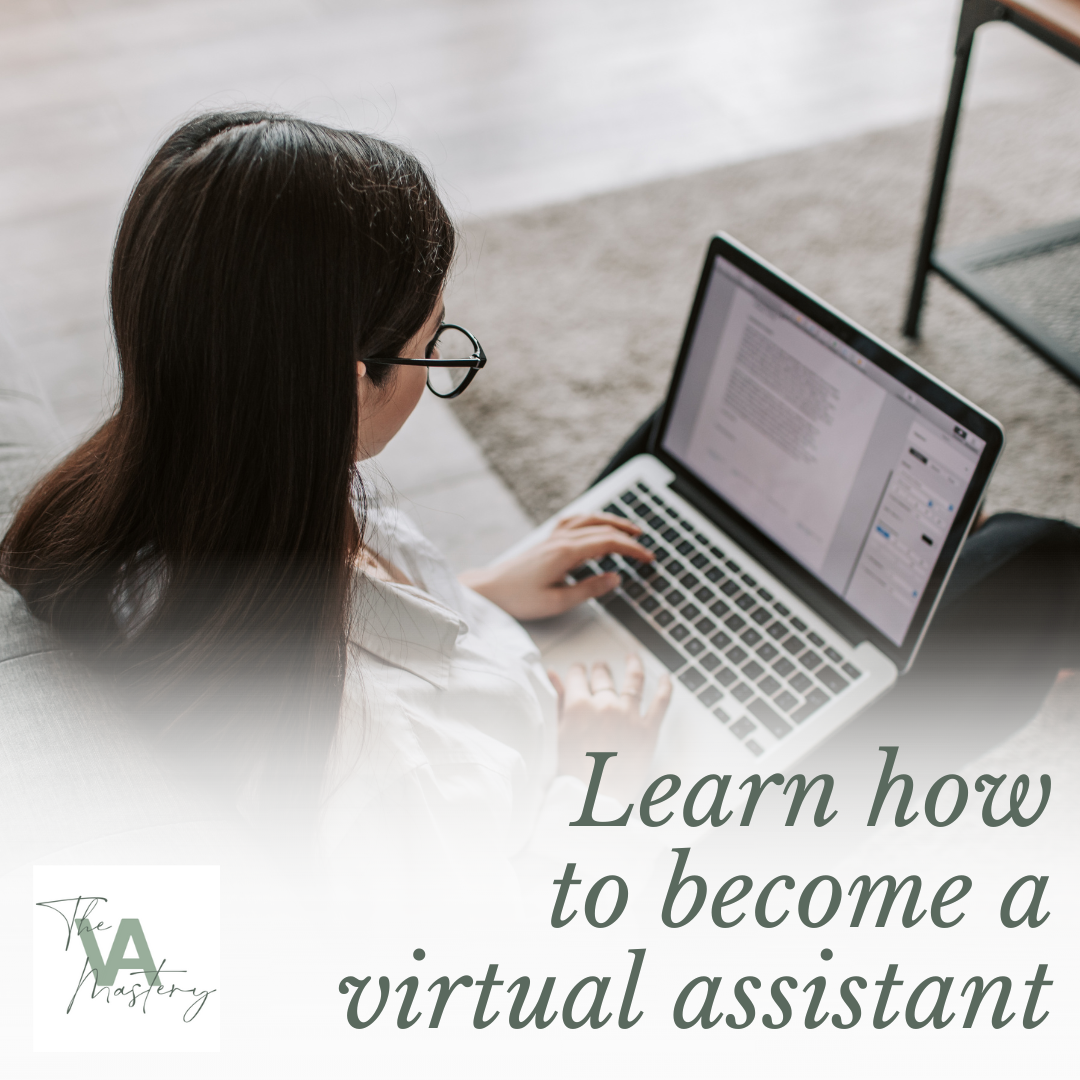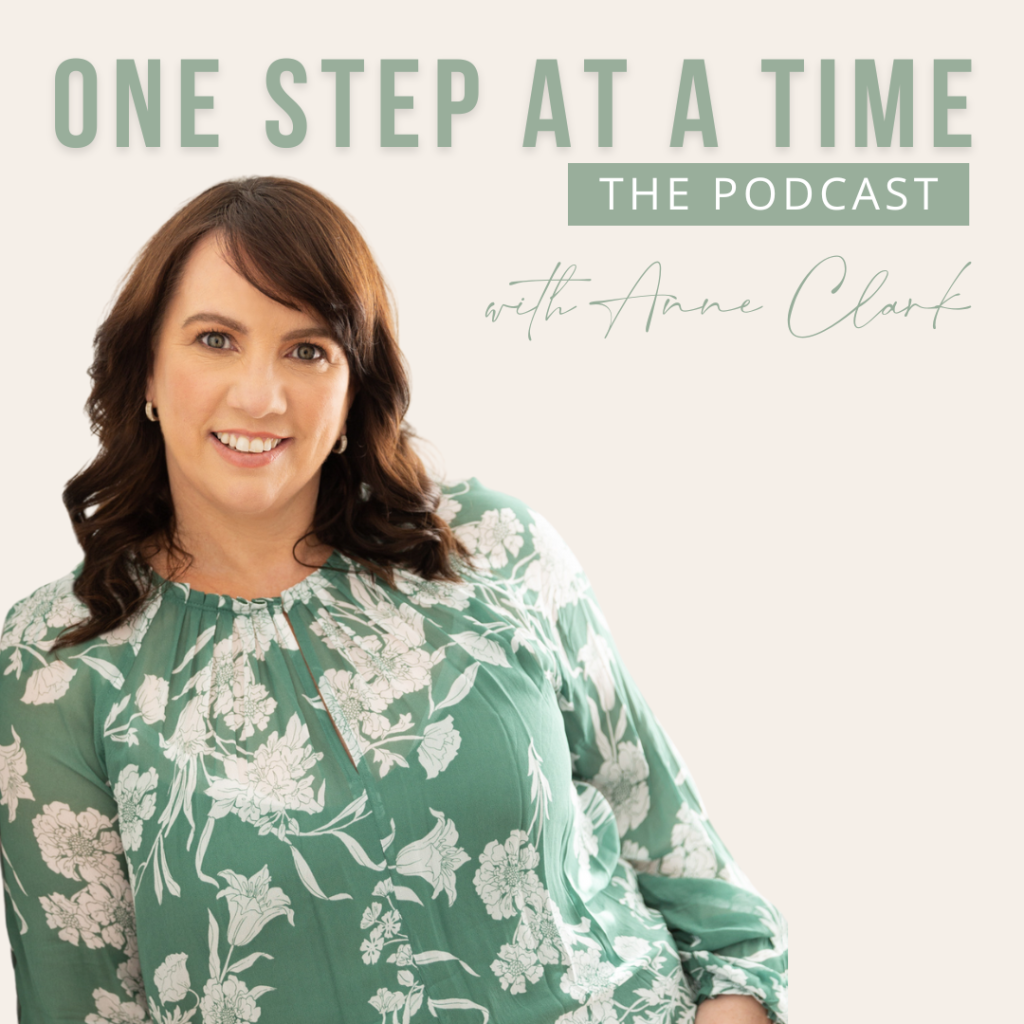
by Anne Clark | Oct 8, 2024 | Business, Customer Journey
As a business owner or entrepreneur, the relationships you build with clients are the foundation of your business. These partnerships fuel your success, create opportunities for growth, and are often deeply rewarding. However, there comes a time when the fit between you and a client may no longer serve your best interests – or theirs. Letting go of a client can be a challenging decision, but it’s also a powerful step towards growth, alignment, and success.
I want to explain why letting go of a client is not only okay but necessary for your business to flourish and for you to work with people who truly align with your values and vision.
1. Protect Your Energy and Time
Your energy and time are your most valuable resources. If you’re working with a client who drains more of these than they should, it’s time to reassess. Complex or unaligned clients often demand extra attention, micromanage projects, or constantly push boundaries, leaving you feeling depleted.
By letting go of a draining client, you free up mental space and time to focus on those who energise and inspire you. When your time is spent on clients who align with your vision, you can pour more into projects that light you up and push your business forward.
2. Align with Your Core Values
Your core values guide your decision-making and help define the type of work you want to do. If a client is not aligned with these values, continuing to work with them may create internal conflict. For example, if you value authenticity and transparency, but your client operates with dishonesty or is unwilling to trust your expertise, this dissonance can hinder your work and overall satisfaction.
When you let go of clients not aligned with your values, you make space for partnerships with individuals who respect and share your vision. This leads to more harmonious, meaningful, and impactful collaborations that help your business grow.
3. Focus on Clients Who Appreciate Your Expertise
It’s not uncommon for some clients to underestimate your skills, question your expertise, or refuse to acknowledge the value you bring to the table. While you might tolerate this in the short term, long-term partnerships built on a lack of trust or respect are counterproductive.
Letting go of clients who do not value your expertise enables you to work with those who appreciate and trust your work. When clients understand your worth, you can deliver better results, experience higher job satisfaction, and enjoy more fruitful, successful partnerships.
4. Create Space for Better Opportunities
Sometimes, staying tied to unfulfilling or misaligned clients blocks you from grabbing new and better opportunities. It’s like holding on to a branch too tight to reach for the next one. If you’re investing time and resources into a client who doesn’t resonate with your goals, you might miss out on opportunities to work with individuals or businesses that better suit your long-term vision.
By releasing clients who aren’t a good fit, you allow room for better, more exciting opportunities to come into your life and business. Letting go sends a clear message to the universe (and to yourself) that you are open to growth and aligned, fulfilling relationships.
5. Uplevel Your Business and Attract Ideal Clients
Your business is constantly evolving, and as you grow, so too should the calibre of clients you work with. By holding on to clients that no longer fit your ideal client profile, you keep yourself anchored to the past. Letting go of them allows you to uplevel and make room for the clients who reflect your current level of expertise and ambition.
When you consciously choose to work with aligned clients, you strengthen your brand, reputation, and the value you offer. This creates a cycle of growth and prosperity, as your ideal clients will not only challenge you in meaningful ways but also help you continue evolving.
6. Foster More Authentic, Enjoyable Relationships
Like any other relationship, business partnerships should be built on mutual respect, understanding, and enjoyment. When you’re working with clients you genuinely like and feel connected to, the relationship thrives, and so does your business. If you find yourself dreading conversations with a client or feeling an uncomfortable disconnect, it’s a sign that the relationship may not be worth maintaining.
Letting go of these clients opens the door to working with people you enjoy collaborating with – clients who inspire you, energise you and align with the kind of work you want to do.
7. Prioritise Your Wellbeing
Working with clients who don’t resonate with you can take a toll on your mental and emotional wellbeing. Whether it’s constant tension, miscommunication, or simply not enjoying the work you’re doing, the stress can affect more than just your business—it can seep into your personal life and overall happiness.
Prioritising your wellbeing is not selfish, but essential for long-term success. When you let go of clients that cause you stress, you allow yourself to recharge, refocus, and work in a state of flow, ultimately benefiting both you and your business.
So….
Letting go of a client isn’t easy, especially when you’ve invested time, effort, and energy into building that relationship. However, by choosing to release clients that no longer serve your growth or align with your values, you make room for new opportunities and aligned partnerships that will elevate your business.
When you work with clients who appreciate, energise, and align with you, the work feels lighter, more fulfilling, and infinitely more rewarding. Trust that by letting go, you are creating space for something better—and that, in itself, is a powerful step toward growth and success.

by Anne Clark | Jul 14, 2024 | Business, Online Business Manager, Spirituality
Unlocking Success: Including Spiritual Practices in Management of Your Businesses
Success is frequently determined by indicators like profitability, market share, and revenue growth. But incorporating spiritual practices into management strategy is a growing trend among visionary business executives and entrepreneurs. Integrating spirituality into business management can greatly improve productivity, creativity, and overall corporate success—far from being a fad exclusive to a certain demographic.
Spiritual Practices’ Place in Business
In this sense, spirituality refers to actions and viewpoints that go beyond the physical realm and emphasize mindfulness, deeper relationships, and purpose. Although they are typically perceived as distinct from the business world, spiritual practices have significant advantages when included into day-to-day management techniques.
1. Being present and mindful
Mindfulness, or the discipline of being aware and present in the moment, is one of the pillars of spirituality. Mindfulness lowers stress and promotes clarity, which improves decision-making in a business setting. A leader who practices mindfulness is better able to handle obstacles, make wise decisions, and keep a clear head under the demands of entrepreneurship.
2. Fostering Originality and Creativity
Spiritual exercises like meditation, introspection, and intuition-based communication frequently foster creativity. The creative and innovative part of the brain, the right hemisphere, is stimulated by these activities. Businesses may come up with fresh concepts, find solutions to challenging issues, and maintain an advantage in cutthroat marketplaces by encouraging creativity.
3. Developing Emotional Intelligence and Resilience
Spiritual practices place a strong emphasis on emotional intelligence and resilience—two qualities that are critical to good leadership. Leaders may effectively handle stress, control emotions, and develop empathy for their team members by utilizing techniques such as meditation and self-reflection. The cultivation of emotional intelligence is known to generate a favourable work environment, augment teamwork, and elevate employee satisfaction, all of which are vital elements in attaining enduring corporate prosperity.
4. Matching Business Objectives with Values
Aligning personal beliefs with organizational objectives is another aspect of incorporating spiritual practices into corporate management. Stakeholders are inspired to trust and remain loyal to leaders that act with sincerity and integrity. Businesses establish a reputation for social responsibility and ethical leadership by emulating fundamental values like compassion, transparency, and ethical conduct.
5. Improving Intuition and Decision-Making
Developing intuition, or a profound understanding that goes beyond reason, is something that spiritual disciplines frequently promote. In the corporate world, intuitive decision-making enhances analytical thinking by offering deeper insights than the data at hand. Leaders who have faith in their instincts are able to take risks, grasp opportunities, and confidently negotiate ambiguity.
Case Studies: Triumphant Narratives
Many prosperous business owners and executives have included spiritual activities as essential components of their management approach. For instance, Apple’s creative culture was influenced by the tech visionary Steve Jobs, who was well-known for his mindfulness exercises and faith in intuition. In a similar vein, businesses such as Google and Salesforce integrate mindfulness and meditation into their work environments to support employee well-being and creativity.
How to Incorporate Spiritual Practices in a Practical Way
Modern organizational structures don’t have to be completely redesigned in order to incorporate spiritual practices into management. Here are some doable actions to get started:
Daily Mindfulness Rituals: To centre and focus the team, begin meetings with a little meditation or mindfulness activity.
Integrate moral principles like compassion, integrity, and environmental stewardship into corporate decisions through values-based leadership.
Encourage brainstorming sessions, retreats, or workshops that foster innovation and creativity in order to foster creative exploration.
Personal Growth Initiatives: Provide tools for meditation, introspection, and emotional health to assist staff members’ personal development.
Embracing spiritual practices into corporate management is about more than just making money; it’s about developing a leadership style that prioritizes moral behaviour, creative expression, and personal development. By adopting mindfulness practices, fostering creativity, and ensuring that actions reflect principles, organizations may realize their full potential and prosper in the ever-changing market landscape of today.
As you begin to include spiritual practices into your business endeavours, keep in mind that success is determined by more than just financial gains; it also depends on the good effects you have on your associates, stakeholders, and the larger community. Accept spirituality as a transformative catalyst, and see how your company thrives with a fresh vision and energy.

by Anne Clark | May 20, 2024 | Business
The Importance of Systems in Running a Successful Business
Systems are the backbone of any successful enterprise, providing structure, efficiency, and consistency. Here’s why they are essential for your business success:
- Efficiency and Productivity
Well-designed systems streamline processes, reducing the time and effort required to complete tasks. By automating repetitive tasks and establishing clear procedures, your team can focus on high-impact activities that drive growth. Efficiency leads to higher productivity, allowing your business to achieve more in less time.
- Consistency and Quality Control
Systems ensure that every aspect of your business operates consistently. Whether it’s customer service, product delivery, or marketing, having standardised procedures guarantees that your customers receive the same high-quality experience every time. This consistency builds trust and loyalty, key ingredients for long-term success.
- Scalability
As your business grows, systems become even more critical. They provide a scalable framework that can handle increased workloads without sacrificing performance. With robust systems in place, you can expand your operations, enter new markets, and manage more customers seamlessly.
- Reduced Errors and Risk Management
Systems help to minimise human error by providing clear guidelines and automated checks. This reduction in errors leads to higher quality outputs and fewer costly mistakes. Additionally, having risk management systems helps identify potential threats and implement strategies to mitigate them, ensuring your business is resilient in the face of challenges.
- Employee Training and Development
Onboarding new employees can be time-consuming, but with systems in place, you can streamline this process. Standard operating procedures (SOPs) and documented workflows make it easier to train new hires, ensuring they quickly become productive members of your team. Moreover, systems can support continuous learning and development, helping your employees grow alongside your business.
- Data-Driven Decision Making
Effective systems often include data collection and analysis components. This data provides valuable insights into your business operations, customer behaviour, and market trends. By leveraging this information, you can make informed decisions that enhance your strategic planning and boost your competitive edge.
- Customer Satisfaction
Customers appreciate consistency and reliability. Systems ensure that your business delivers on its promises, meeting customer expectations time and again. From prompt responses to seamless transactions, a well-systematised business fosters positive customer experiences, leading to higher satisfaction and retention rates.
- Flexibility and Adaptability
Contrary to what some might think, systems don’t make your business rigid. Instead, they provide a stable foundation that allows for flexibility and adaptability. When your core processes are systematised, you can more easily implement changes and innovations, keeping your business agile and responsive to market demands.
By investing time and resources into developing strong systems, you pave the way for sustainable growth and long-term success. Remember, a business without systems is like a ship without a compass – it may move, but it won’t navigate towards success with purpose and precision. Start building your systems today, and watch your business flourish.

by Anne Clark | Jan 13, 2024 | Business, Online Business Manager
As an entrepreneur or business owner, it’s easy to get overwhelmed with the myriad of tasks and responsibilities that come with managing a business. From marketing and sales to operations and customer service, the list seems never-ending. However, one of the most effective ways to scale your business and ensure long-term success is to bring in an online business manager (OBM) to help you manage your operations. By delegating tasks and responsibilities to an OBM, you can free up your time and energy to focus on your zone of genius.
Who is an Online Business Manager?
An online business manager is a skilled professional who works remotely to help entrepreneurs and businesses streamline their operations, increase efficiency, and promote growth. They typically have a diverse skill set and can handle a wide range of tasks, from project management and team coordination to marketing strategy and systems implementation.
Benefits of Hiring an Online Business Manager
1. Focus on Your Zone of Genius
Every entrepreneur has their own unique talents and expertise that contribute to the success of their business. By bringing in an OBM, you can delegate time-consuming and non-essential tasks, allowing you to focus on what you do best. This empowers you to leverage your skills to drive innovation, create new products or services, and develop your business further.
2. Increased Productivity and Efficiency
An OBM is trained to identify and eliminate bottlenecks and inefficiencies in your business processes. They can optimize systems, implement automation, and establish standardized workflows to streamline your operations. By doing so, an OBM can significantly improve your productivity and overall business efficiency.
3. Strategic Planning and Execution
Growing a business requires strategic planning and effective execution. An OBM can work closely with you to develop strategies, set goals, and create action plans. With their experience and expertise, they can help you align your business objectives with your target market and industry trends, ensuring that your growth efforts are well-planned and executed.
4. Team Management and Communication
If you have a team, an OBM can serve as a liaison between you and your employees. They can effectively communicate your vision, goals, and expectations to your team, ensuring everyone is on the same page. Additionally, an OBM can help you with hiring and training new team members, managing performance and deadlines, and fostering a positive and productive work environment.
5. Scalability and Flexibility
As your business grows, so do your needs. An OBM can adapt to changing requirements and help you scale your business effectively. They can assist in managing new projects, expanding your team, and implementing systems and processes to support growth. The flexibility of an OBM ensures that as your business evolves, they can evolve with it.
Finding the Right Online Business Manager
When looking for an OBM, it’s crucial to find someone who has the right skills, experience, and values that align with your business. Conduct thorough interviews and consider asking for client references to gauge their track record and professionalism. Communication skills, reliability, and attention to detail are also critical attributes to look for in an OBM.
Bringing in an online business manager is a strategic move that can enhance your business growth. By delegating operational tasks and responsibilities, you can focus on your zone of genius, drive innovation, and accelerate your business’s success. With their expertise in managing projects, teams, and systems, an OBM can optimize your operations, increase productivity, and ensure scalability. As you consider ways to grow your business, hiring an OBM should be high on your priority list.

by Anne Clark | Sep 25, 2023 | Business
Suffering a bit of Monday-i-tis! Look no further here are
50 motivational quotes to kick off your Mondays!
1. “Mondays are the start of the workweek which offers new beginnings 52 times a year!” – David Dweck
2. “Monday is a fresh start. It’s never too late to dig in and begin a new journey of success.”
3. “Your Monday morning thoughts set the tone for your whole week. See yourself getting stronger, and living a fulfilling, happier, and healthier life.”
4. “Do not wait; the time will never be ‘just right.’ Start where you stand.” – Napoleon Hill
5. “Success is to wake up each morning and consciously decide that today will be the best day of your life.” – Ken Poirot
6. “To be successful, the first thing to do is fall in love with your work.”
7. “Mondays are a lot like getting fat. They make you feel sad, sometimes angry and there is not much scope for liking either fat or Mondays for any reason.” – Garry Moll
8. “Believe on Monday the way you believe on Sunday.” – Rita Schiano
9. “Either you run the day, or the day runs you.” – Jim Rohn
10. “People often say that motivation doesn’t last. Well, neither does bathing. That’s why we recommend it daily.” – Zig Ziglar
11. “With the new day comes new strength and new thoughts.” – Eleanor Roosevelt
12. “Candy is nature’s way of making up for Mondays.” – Unknown Author
13. “You’ve got to get up every morning with determination if you’re going to go to bed with satisfaction.” – George Lorimer
14. “The future depends on what you do today.” – Mahatma Gandhi
15. “This is your Monday morning reminder that you can handle whatever this week throws at you.”
16. “Mondays are the potholes in the road of life.” – Tom Wilson
17. “The only way to do great work is to love what you do.” – Steve Jobs
18. “The biggest thrill wasn’t in winning on Sunday but in meeting the payroll on Monday.” – Art Rooney
19. “Your passion is waiting for your courage to catch up.” – Isabelle Lafleche
20. “Monday is just a reminder that the weekend has past and there are only a few more days before another weekend gets here.”
21. “The start of your week sets the tone for the rest of it. Start strong and positive!”
22. “Every Monday is a chance to start a new fabulous week. Embrace it!”
23. “Keep away from people who try to belittle your ambitions. Small people always do that, but the really great make you feel that you, too, can become great.” – Mark Twain
24. “The road to success is dotted with many tempting parking spaces.” – Will Rogers
25. “A ship is always safe at shore but that is not what it’s built for.” – Albert Einstein
26. “The future is created by what you do today, not tomorrow.” – Robert Kiyosaki
27. “The only limits you have are the limits you believe.” – Wayne Dyer
28. “Turn your obstacles into opportunities and your problems into possibilities.” – Roy T. Bennett
29. “Don’t watch the clock; do what it does. Keep going.” – Sam Levenson
30. “You have within you right now, everything you need to deal with whatever the world can throw at you.” – Brian Tracy
31. “Don’t let what you cannot do interfere with what you can do.” – John R. Wooden
32. “Believe you can and you’re halfway there.” – Theodore Roosevelt
33. “Start by doing what’s necessary; then do what’s possible; and suddenly you are doing the impossible.” – Francis of Assisi
34. “Every accomplishment starts with the decision to try.”
35. “Mondays are a good day to make statements, not Friday.” – Ernie Els
36. “Monday won’t be so gloomy if you believe that something good is always bound to happen.”
37. “New beginnings are often disguised as painful endings.” – Lao Tzu
38. “Today, you are you that is truer than true. There is no one alive who is youer than you.” – Dr. Seuss
39. “Be so good they can’t ignore you.” – Steve Martin
40. “Attack Monday with enthusiasm, laughter, thousands of smiles and cheerfulness.”
41. “Success means doing the best we can with what we have.” – Zig Ziglar
42. “Our greatest glory is not in never falling, but in rising every time we fall.” – Confucius
43. “Life is 10% what happens to us and 90% how we react to it.” – Charles R. Swindoll
44. “Wake up on Monday and start your day with a lot of awesomeness and you will get happiness back.”
45. “It’s not about perfect. It’s about effort.” – Jillian Michaels
46. “The man on top of the mountain didn’t fall there.” – Vince Lombardi
47. “It’s Monday. Get a new perspective. Whatever obstacle you’re facing, it’s not permanent.”
48. “Monday is the day to be back at your passion. Turn your dreams into goals. Action them into reality.”
49. “Success is liking yourself, liking what you do, and liking how you do it.” – Maya Angelou
50. “Monday is a great for becoming too busy to die.” – Roy Station
Remember, motivation is what gets you started, but habit is what keeps you going. Make every Monday count!











